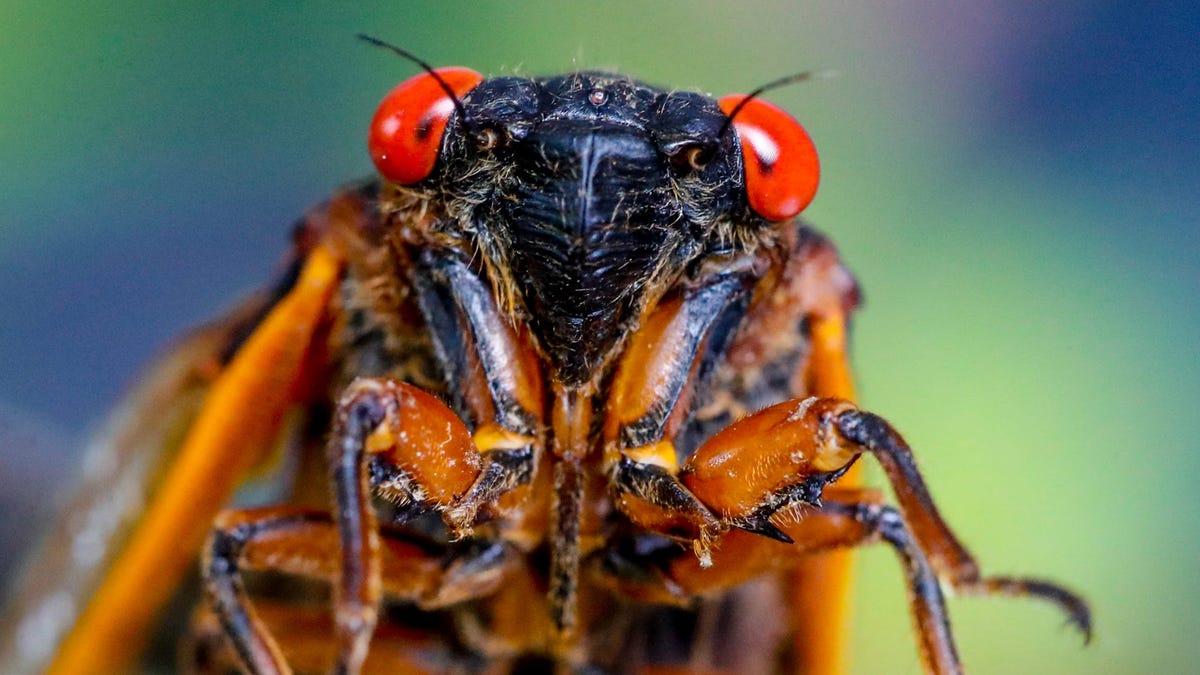Missouri
USS Missouri: The U.S. Navy’s Best Battleship Ever?

The USS Missouri: The Battleship That Changed Everything – When you think of battleships the USS Missouri should be top of mind. No other battleship played a role in so many hot spots and made so much history. From the surrender of Japan to mark the end of World War Two to Operation Desert Storm, the Missouri served the United States with honor. This ship was highly decorated with numerous awards for valor. It was big and fast, and its huge guns made the enemy pay. Nicknamed the “Mighty Mo,” it was one of the largest ships the U.S. Navy ever operated.
The Mighty Mo Was Huge
The Missouri, at over 58,000 tons and almost 900 feet in length, was part of the Iowa-class of battleships. The USS Missouri was the last battle wagon ever introduced to the navy. Its deck was the site of one of the most consequential surrenders in modern warfare history when the Japanese signed an agreement to end the war on September 2, 1945.
Stayed in Service to Menace Enemy Forces
But the Missouri wasn’t finished. The Korean War beckoned, and the USS Missouri answered the call again. The warship finished service for the first time in 1955. Then-President Ronald Reagan built up the navy during the Cold War and brought the Missouri back to service. Outfitted with missile launchers, the Missouri used missiles and huge shells fired from deck guns to send doom to the Iraqi army during the first Gulf War. It finally decommissioned after the Cold War in 1992 after winning 11 battle stars.
Made to Steam Fast
Laid down in 1941, the Mighty Mo was built for speed – reaching 33 knots at times. It required major propulsion to challenge the Japanese fast Kongo-class battlecruisers in World War Two. It also needed to steam in tandem with the American Essex-class carriers. Although gigantic in size, it could even make it through the Panama Canal giving it the ability to project power around the globe.
The Big Guns Dominated
The firepower was impressive. USS Missouri boasted nine 16-inch guns, 20 five-inch guns, and 40mm anti-aircraft guns, plus 49 20mm anti-aircraft guns. During World War II, The Mighty Mo shot the 16-inch guns during the Marine Corps amphibious landings at Iwo Jima and Okinawa. Then it fired on the Japanese home islands. It was probably most engaged during the Okinawa campaign, when it destroyed enemy planes, took a hit from a kamikaze suicide plane, repaired the damage, and commenced to shell the island again.
It Wasn’t Finished After World War Tow
During the Korean War, it was the flagship of the Seventh Fleet. The guns of the USS Missouri brought pain to communist forces in Chonjin, Tanchon, and Wonsan. After that engagement, the warship was retired and became a museum vessel in Washington state in 1955.
But the Missouri wasn’t finished. An inflection point in the Cold War happened during the 1980s in which the Reagan White House wanted a 600-ship navy. The Missouri came out of retirement in style. Now outfitted with Tomahawk cruise missiles and surface-to-air missiles, it was meant to overawe the Soviet navy.
USS Missouri Played an Important Role in Desert Storm
The next challenge was Operation Desert Storm. War planners in that engagement had an idea. Why not use the Missouri and other ships to fake a marine amphibious landing, while the main force attacked the Iraqis on land? This feint worked and it tied up a substantial number of Iraqi troops who thought the Americans would come in from the sea. But that wasn’t all. During the Gulf War, the ship launched at least 28-cruise missiles plus it rained steel. One hundred 16-inch shells hit Iraqi targets.

The USS Missouri should be applauded for its distinguished service. It saw some of the most significant wars in U.S. history. Any sailor who served on the Missouri over the decades likely had fond memories of its exploits. The Missouri showed that large ships could still make a difference in combat from World War Two up until the early 1990s when it was finally decommissioned in 1992.
About the Author
Brent M. Eastwood, PhD, is the author of Humans, Machines, and Data: Future Trends in Warfare. He is an Emerging Threats expert and former U.S. Army Infantry officer. You can follow him on Twitter @BMEastwood.

Missouri
Legislation enacting total ban on child marriage in Missouri dies in the House • Missouri Independent

Child marriage will remain legal in Missouri for at least another year after Republican House leaders said they don’t have enough time to pass it.
Under current Missouri law, anyone under 16 is prohibited from getting married. But 16 and 17 year olds can get married with parental consent to anyone under 21.
Under legislation that cleared the Senate with virtually no opposition earlier this year, marriage would be banned for anyone under 18. “It was very surprising that the House has not allowed it to come to the body,” said Republican state Sen. Holly Thompson Rehder of Scott City, who sponsored the bill along with Sen. Lauren Arthur, a Democrat of Kansas City.
“Banning child marriage should not be controversial. When I filed this bill, I had no idea it would be controversial,” Rehder added.
The bill was stalled by a group of Republican critics in a House committee, who said it would constitute government overreach and infringe on parental rights. It finally passed out of committee this week after several of those critics were not present at the vote.
But House leadership told reporters Friday morning it was too late to place the bill on the House calendar for debate. Session ends at 6 p.m.
“There’s some interest there, unfortunately the rules preclude us from doing that today,” said House Majority Leader Jon Patterson, a Lee’s Summit Republican.
Arthur said the failure is “shameful.”
“When I talk to people back home, they’re surprised to learn that minors can get married in the first place,” Arthur said. “And these are the kinds of headlines that my friends who are apolitical or live in different parts of the country send me and say, ‘What is happening in Missouri?’
“It makes us look bad,” she said, “but more importantly, we’re not doing enough to protect young girls who are forced into marriages and their lives are worse in every way as a result.”
Twelve other states have in recent years banned child marriage.
Rehder said she was told only around 20 out of 163 House members were opposed. She also said the House could have voted to suspend its rules to allow the bill to be debated and passed before adjournment, but suggested that House Speaker Dean Plocher refused to let the bill move forward to avoid embarrassing Republicans who are opposed to banning child marriage.
“We have the votes,” Rehder said, but it didn’t come up “because the speaker didn’t want to put his members in a bad situation.”
“…Because you shouldn’t be against banning child marriage.”
Rehder said she’s hopeful the bill will succeed next year, in large part due to the “public pressure” of state and national media.
“You cannot sign a legal binding contract in Missouri until you’re 18. But we’re allowing a parent to sign a child into a lifetime commitment. It’s ridiculous.”
Rehder attributed some of the opposition to generational differences.
“People who have been against it — the men who have been against it — who talk to me about it have said, ‘Oh, my grandmother got married at 15.’ Well, yes I did too, mine was 40 years ago,” Rehder said.
“And it didn’t work out because I was operating on not an adult mindset.”
Fraidy Reiss, an activist who founded the nonprofit against forced marriage Unchained at Last was active in testifying in support of the bill in Missouri and has worked nationally to pass similar legislation. Upon hearing the news, Reiss said: “How can legislators live with themselves?”
She added that “dozens of teens will be subjected to a human rights abuse and legally trafficked under the guise of marriage in the coming year,” due to the failure to pass the legislation.
“…How will they explain that to their constituents?”
Missouri
It’s time — the cicadas are coming. Here’s what to know about Missouri’s summer brood

2024 cicada-geddon: Trillions expected to swarm parts of US
Trillions of cicadas, which last came together in 1803, will cover a larger than normal area of the United States.
If you’ve spent any time outdoors the last few days, you may have heard the rhythmic buzzing — or screaming — of cicadas beginning to emerge from the ground. For the first time in 221 years, more than one million cicadas will emerge simultaneously throughout the country.
Deemed a rare emergence, two broods of cicadas are making their way to the surface this summer. The largest brood, known as Brood XIX, appears every 13 years and Brood XIII emerges every 17 years. The two broods haven’t emerged in the same year since 1803 and won’t again until 2245.
Southwest MO to see only one brood
Broods XIX and XIII will appear in 17 states this spring and summer: Alabama, Arkansas, Georgia, Illinois, Indiana, Iowa, Kentucky, Louisiana, Michigan, Mississippi, Missouri, North Carolina, Oklahoma, South Carolina, Tennessee, Wisconsin and Virginia. However, not all states will see an overlap of the broods.
When it comes to “Cicadageddon” in Missouri, only counties in the northeast part of the state will see members of both broods. In southwest Missouri, folks will only experience buzzing from Brood XIX, which hasn’t emerged since 2011.
In addition to Missouri, Brood XIX stretches from southern Iowa to Oklahoma, through the southern coastal states and as far east as Washington D.C.
When will they emerge, when will they leave?
The emergence of cicadas is dependent on weather, when soil 8 inches below ground reaches 64 degrees Fahrenheit. In Missouri, this tends to be mid-May. Folks throughout the state of Missouri have likely already seen a few of the critters out and about.
The lifespan of a cicada is typically four to six weeks, so the insects will begin to die off in late June.
What do Brood XIX cicadas look like?
Unlike annual cicadas, which are greenish in color, Brood XIX cicadas have black bodies, orange markings, clear wings and red eyes. Brood XIX cicadas can grow 1-2 inches in length and have a wingspan of 3-4 inches.
How do cicadas make that distinctive buzzing sound?
Cicadas are considered one of the loudest insects, buzzing up to 90-100 decibels. But it’s only male cicadas that make that distinctive buzzing sound. Female cicadas do not have the necessary sound-producing organs.
Male cicadas have two vibrating membranes called tymbals that sit behind each wing. Each tymbal contains a series of ribs that bend and make clicking sounds when a male flexes its muscles. Cicadas repeat this movement 300-400 times per second, which result in the unique buzzing sound.
Two eardrums are also responsible for carrying the sound. By tightening the muscles around their eardrums and extending their abdomens, cicadas can alter the volume and pitch of their sound. The abdomen of a male cicada is almost entirely hollow, which helps to amplify these sounds.
Though female cicadas cannot make these sounds, they respond to male cicadas with the flicking of their wings.
Do cicadas bite or sting?
Cicadas are harmless to humans and pets; they do not bite or sting. If you decide to pick one up, their prickly feet make poke your skin, though.
Cicadas can, however, be dangerous to young trees, as cicadas lay their eggs on small tree branches. To protect young saplings, cover them in a mesh or netting to keep the cicadas out.
What’s the difference between cicadas and locusts?
Though both are large and loud, cicadas and locusts are two different species of insects. Locusts belong to the same family as grasshoppers and are more destructive, feeding on much plant life. Though cicadas lay their eggs in trees, they do not chew leaves or harm crops. They only drink tree sap.
Greta Cross is the trending topics reporter for the Springfield News-Leader. She has more than five years of journalism experience covering everything from Ozarks history to Springfield’s LGBTQIA+ community. Follow her on X and Instagram @gretacrossphoto. Story idea? Email her at gcross@news-leader.com.
Missouri
IP debate kills other legislative efforts as Missouri session ends Friday

JEFFERSON CITY, Mo. — State lawmakers are poised to end the regular session of the General Assembly Friday having largely done a lot of what was expected when the session began in January, with one exception that has muddled the legislative process over the past two weeks.
Lawmakers approved a budget before last Friday’s constitutional deadline. They renewed a medical provider tax known as the Federal Reimbursement Allowance, which puts more than $4 billion into the state’s Medicaid program.
But a key GOP priority– asking voters to make it harder to amend the state’s constitution in anticipation of an abortion rights initiative petition question being on the August or November ballot–is unlikely to pass despite supermajorities in both chambers.
A small faction of Republicans in the Senate known as the Freedom Caucus sought near-immediate action on initiative petition reform when lawmakers came into session in January and held up legislative action while battling with Senate leadership.
Instead of the current “50+1” simple majority, Republicans sought to require a majority of voters in five of the state’s eight congressional districts. The Senate ultimately sent the House a version of the bill that stripped out so-called “ballot candy” of requiring voters to be citizens and to ban foreign spending on initiative petition campaigns–things that are already illegal under state law–after Democrats filibustered in February.
The House restored those provisions and sent them back to the Senate, where Democrats again filibustered, starting Monday until Wednesday afternoon, setting a record at roughly 50 hours.
The bill was ultimately sent to committee when Republicans did not have enough support to take what is considered a nuclear option in the Senate–moving the previous question–to force a vote. That led to more threats from Freedom Caucus members to hold up any other business that might come before the chamber before Friday’s deadline.
When the Senate twice gaveled back into session Thursday, there were skirmishes between Freedom Cacus members and GOP members aligned with leadership that quickly led to adjournments.
The House on Thursday said it would not agree to the committee request from the Senate on the initiative petition measure and instead sent it back to the Senate unchanged, setting the stage for one more battle in the Senate Friday, either with the potential for one final Freedom Caucus or Democratic filibuster.
The House did give final passage Thursday to an omnibus property rights bill that would ban municipalities from passing eviction moratoriums that weren’t authorized under state law. The bill included three separate pieces of legislation authored by State Rep. Jim Murphy, a Republican from South St. Louis County. One bars homeowners associations from preventing people from raising chickens, an issue Murphy conceded was a big deal for his grandchildren. Another exempts non-profits from St. Louis County requirements for electronic vehicle charging stations, while the third would give business owners rebates on taxes and fees in the event a local government prompted a shutdown, harkening back to the COVID era.
Another bill Murphy shepherded wasn’t so fortunate.
He sponsored legislation that would clarify that the city of St. Louis could not collect an earnings tax based on remote work done outside the city. The legislation passed the House in late March and got out of a Senate committee on May 6.
“It was high on the Senate calendar. It had a path to get done, and then the Senate just simply shut down for the last week as they’ve done in the past. We’re hoping in the future that somehow we get a Senate that will work the entire session rather than closing down the last week or so. It’s unfortunate,” he said. “It got very close to the end and unfortunately suffered the fate of many great bills that should have passed this year. Hopefully next year we’ll do much better.”
Another legislative casualty is a Senate bill that, if passed, would have authorized St. Louis County to hold a vote for a sales tax to support early childhood education and care. Backers conceded that it won’t get across the finish line this year. A proposal to put a similar question before voters in the city of St. Louis in November is similarly in doubt.
For a legislative session that figures to see a relatively small number of bills reach the governor’s desk this year, Murphy is taking “a win is a win” approach.
“Getting three things across the line in this session was probably as much as you could hope for,” he said.
-

 Politics1 week ago
Politics1 week ago'You need to stop': Gov. Noem lashes out during heated interview over book anecdote about killing dog
-

 Politics1 week ago
Politics1 week agoRFK Jr said a worm ate part of his brain and died in his head
-

 World1 week ago
World1 week agoPentagon chief confirms US pause on weapons shipment to Israel
-

 World1 week ago
World1 week agoConvicted MEP's expense claims must be published: EU court
-

 Politics1 week ago
Politics1 week agoCalifornia Gov Gavin Newsom roasted over video promoting state's ‘record’ tourism: ‘Smoke and mirrors’
-

 News1 week ago
News1 week agoStudents and civil rights groups blast police response to campus protests
-

 Politics1 week ago
Politics1 week agoOhio AG defends letter warning 'woke' masked anti-Israel protesters they face prison time: 'We have a society'
-

 Politics1 week ago
Politics1 week agoBiden’s decision to pull Israel weapons shipment kept quiet until after Holocaust remembrance address: report



















